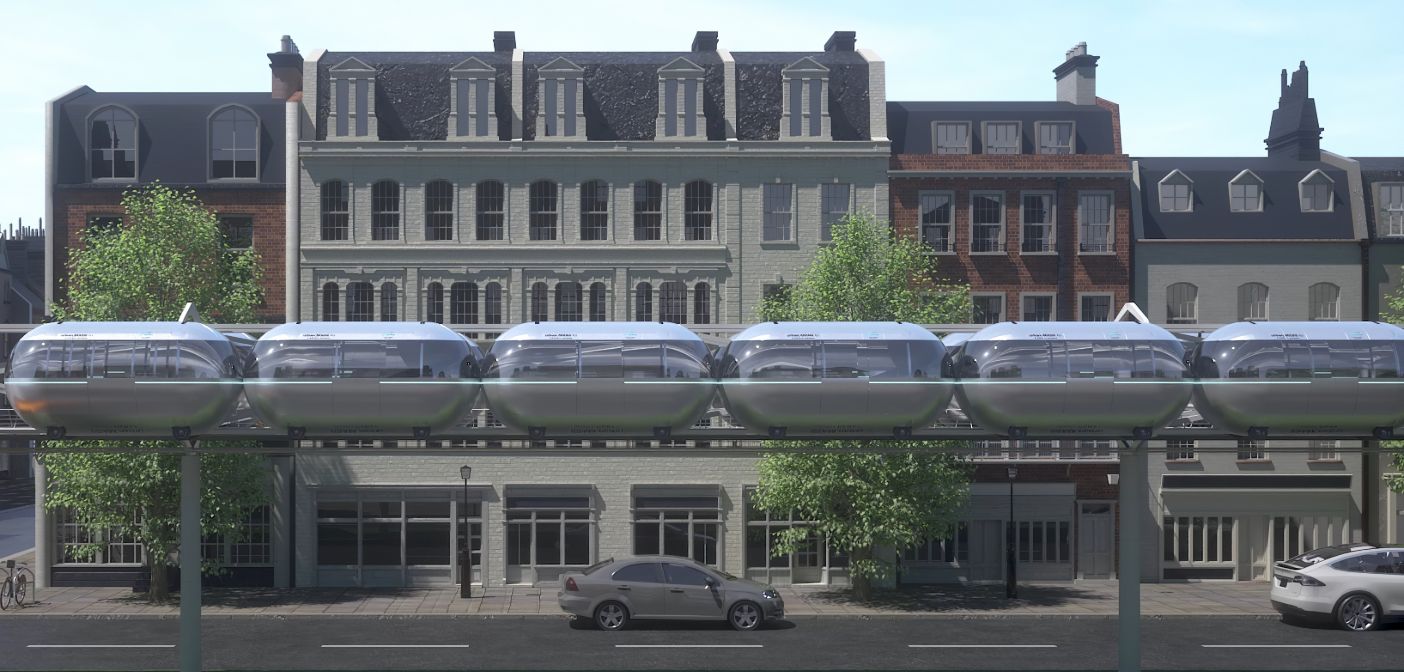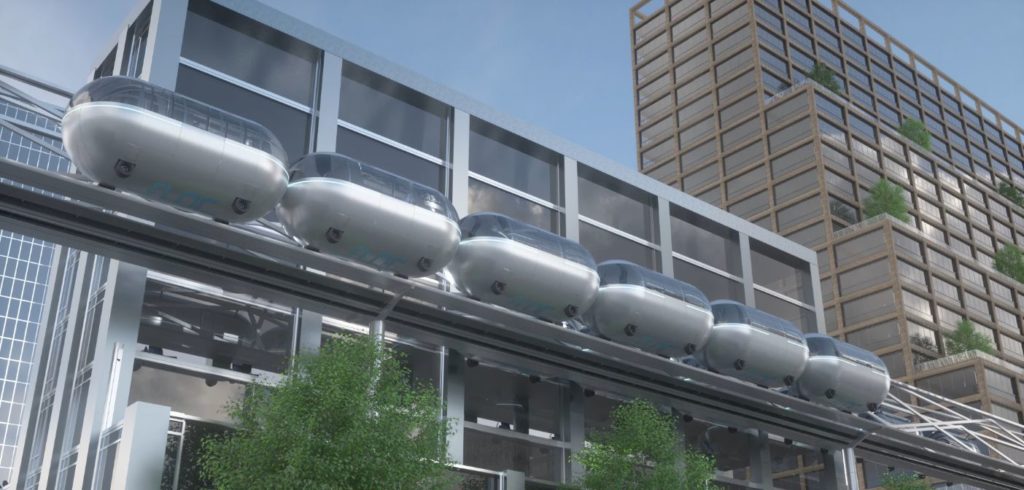A driverless, zero-emission mass transit technology – comprising autonomous electric pods capable of travelling on both road and rail – has been launched by UK-start up Urban.MASS.
The concept utilises Urban.MASS’s ‘Floc’ technology, which combines door-to-door, on-demand ride-hailing transport with high-frequency, accessible and sustainable mass transit for emission-free passenger and cargo journeys across cities.
It is designed to be cheaper and quicker to construct, with a smaller physical footprint than conventional metro rail, light rail and tram projects. The company’s first fully operational site is planned to open in 2025 at the National Railway Museum in Shildon, North East England.
According to Urban.MAAS, a rapid global rollout will follow, with at least 10 cities reportedly set to adopt the technology by 2030, starting with the world’s first city-scale project in Kampala, the capital of Uganda, and cities across the UK, including Bristol, Liverpool, Cambridge, Oxford, and Cardiff.

Kevin O’Grady, CEO of Urban.MASS, said: “Cities are changing like never before – populations are exploding but the way we move people around hasn’t changed in over a century.
“Victorian-era rail and road technologies weren’t designed for the demands of modern life and yet worldwide we continue to rely on the same basic, expensive, and carbon intensive system.
“We should be using solutions of the twenty-first century, to serve the new-breed of cities we see today – cities that are built for people, not polluting vehicles.”
The Floc technology deploys hundreds of lightweight, driverless, zero-emission electric pods to collect passengers from anywhere in a city using ground-level tracks or existing road networks.
To traverse congested urban centres at high speeds, the pods elevate to an above-ground ‘Duo Rail’ track via Urban.MASS stations, without passengers having to leave the pod.
The pods can be connected or run individually depending on demand, delivering high frequency peak capacity on dense routes and providing economically viable services on less dense routes or during off-peak times.
Powered by overhead solar canopies, the elevated Duo Rail track can run above existing roads and infrastructure, giving a physical footprint said to be some 70% smaller than a typical urban light rail system.
According to Urban.MAAS, this allows for unobtrusive infrastructure through dense urban areas and minimises the need to demolish buildings or dig tunnel networks, while also allowing space for roads, green corridors, cycle paths or pedestrian zones below.

Using pop-up construction methods, each prefabricated section of Duo Rail track can reportedly be installed in a matter of days, enabling new sections to be added or adapted when needed. The resulting system is said to cost 50% less than conventional light rail, with less environmental impact.
To support its planned global growth, Urban.MASS has signed partnership agreements with Grimshaw architectural design company, which has developed major mass transit projects worldwide, and engineering professional services consultancy WSP, which acted as engineers on the new London Bridge Station, UK.
Urban.MASS said it chose Shildon for its first site due to the area’s ability to demonstrate how Floc Duo Rail will navigate a number of obstacles, including a road bridge, existing railway line and public walkway.
The site will consist of three stations. The first is at ground level, allowing passengers to board pods and travel on tarmac. The second is situated on an above-ground Duo Rail track allowing high-speed travel which traverses physical obstacles below.
The third station, equidistant between the other two, enables pods to transfer between the ground-level and the above-ground track to demonstrate how future door-to-door road transport can be combined with mass transit rail to reduce congestion.




